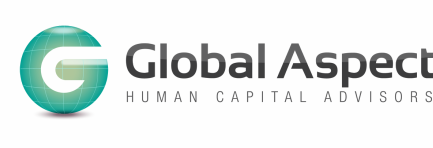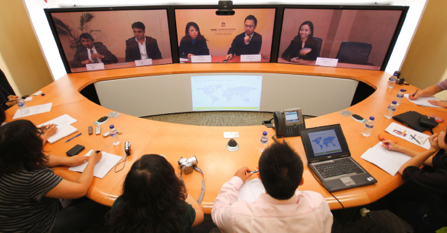
A couple weeks ago I flew to London and facilitated a 3-day workshop with a large global client. This highly interactive event included participants from Dubai, Australia, India, Brazil, Venezuela, the US, UK and half a dozen other countries. The workshop agenda included a mix of large group discussions, smaller breakouts, pre-work, homework and lively focused dialogue. By the end of the third day we were all tired, excited about what we had accomplished, and also a little sad to be saying goodbye. However, we closed the session with a focused and clear list of next steps as well as a great sense of pride for how quickly and effectively this global team came together to achieve some tremendous outcomes.
The only catch – we didn’t actually come together in the same physical space. Instead, this workshop was virtual, relying on cutting-edge technology, creativity and flexibility of the participants, and a strong desire to work real-time with colleagues across geographic and cultural boundaries.
Anyone who has worked as part of a global organization or team can appreciate the difficulty when members are separated by time zones and geographic space. If you work for a US-based organization but live in Asia, you are probably all too familiar with late-night conference calls. People in the UK have a somewhat easier task because certain times of their workday overlap with colleagues in the Americas and Asia. Unfortunately, that is not the case with Asia and the Americas where conference calls between the two means that someone will be dialing in very late or very early.
So until scientists are actually able to produce a working transporter of the sort that Captain Kirk and the crew of the Starship Enterprise used to jet across solar systems, what are global organizations to do? What can they do to bring people together from across the globe for a longer period of time than a typical conference? The answer is that there is no transporter (yet) and no simple answer. Working globally is hard but also critical. Making connections across regions, cultures and time zones is necessary, but travel budgets can limit the opportunity for face-to-face interaction.
Enter the virtual workshop – While most of us prefer face-to-face meetings with colleagues, technology and a creative agenda made this workshop effective, engaging, and highly productive. First, it was important for everyone to see their colleagues and for that we utilized a mix of Telepresence and Skype video. Second, it was important for everyone to be able to brainstorm and capture thoughts together on virtual flipcharts. For that, we used RealtimeBoard. This virtual whiteboard allowed participants, regardless of geographic location, to record their ideas for everyone to see, as well as attach virtual post-it notes, upload videos and embed images, edit and build upon each others’ contributions. Throughout the three days, individuals also worked together in virtual breakout sessions, utilizing video and teleconference, instant messaging and “old fashioned” email technology as well as the same RealtimeBoard. Upon completion of individual breakout sessions, these smaller groups rejoined the larger group and reported out, referencing the boards as easily and seamlessly as if they were all in the same conference room.
Finally – and this is the creative piece - we utilized a rotating schedule with London serving as a common denominator. Day 1 for Asia started at 8:00 a.m. UK time. On the line were individuals in London, Australia, Dubai, India, and several other countries. Day 1 for the West started at 1:00 p.m. UK time. On the line was the London team as well as individuals in the US, Canada, Brazil, Venezuela, and others. And from noon to 1 p.m. UK time, everyone joined together across the globe. During this one-hour of overlap, the team in Asia would brief the West team on their accomplishments and effectively hand a virtual and proverbial baton to their colleagues on the other side of the globe. Individuals in Asia would then sign off while their colleagues in the West got down to work, then passed the virtual baton back to Asia at the end of their day. By passing work from East to West and back again, we were highly efficient and leveraged the talent of everyone across the globe. Moreover, the one-hour we spent together allowed participants to share their thoughts, debrief, challenge one-another, and agree to next steps. All of this contributed to a highly collaborative, effective, and engaging workshop.
Is this perfect? Not quite. Most of us would agree that face-to-face interaction, particularly when working with colleagues from different countries and cultures, is the preferred mode of communication. There were also a few technical hiccups. For example, a temperature of 120-degrees Fahrenheit in India one day contributed to intermittent power outages. However, when logistics and budgets make this unrealistic, technology and creative scheduling can help bring people together virtually across the globe. It will not replace the occasional late-night conference calls but as organizations continue to expand globally, it makes sense to explore creative options to facilitate global collaboration.
The only catch – we didn’t actually come together in the same physical space. Instead, this workshop was virtual, relying on cutting-edge technology, creativity and flexibility of the participants, and a strong desire to work real-time with colleagues across geographic and cultural boundaries.
Anyone who has worked as part of a global organization or team can appreciate the difficulty when members are separated by time zones and geographic space. If you work for a US-based organization but live in Asia, you are probably all too familiar with late-night conference calls. People in the UK have a somewhat easier task because certain times of their workday overlap with colleagues in the Americas and Asia. Unfortunately, that is not the case with Asia and the Americas where conference calls between the two means that someone will be dialing in very late or very early.
So until scientists are actually able to produce a working transporter of the sort that Captain Kirk and the crew of the Starship Enterprise used to jet across solar systems, what are global organizations to do? What can they do to bring people together from across the globe for a longer period of time than a typical conference? The answer is that there is no transporter (yet) and no simple answer. Working globally is hard but also critical. Making connections across regions, cultures and time zones is necessary, but travel budgets can limit the opportunity for face-to-face interaction.
Enter the virtual workshop – While most of us prefer face-to-face meetings with colleagues, technology and a creative agenda made this workshop effective, engaging, and highly productive. First, it was important for everyone to see their colleagues and for that we utilized a mix of Telepresence and Skype video. Second, it was important for everyone to be able to brainstorm and capture thoughts together on virtual flipcharts. For that, we used RealtimeBoard. This virtual whiteboard allowed participants, regardless of geographic location, to record their ideas for everyone to see, as well as attach virtual post-it notes, upload videos and embed images, edit and build upon each others’ contributions. Throughout the three days, individuals also worked together in virtual breakout sessions, utilizing video and teleconference, instant messaging and “old fashioned” email technology as well as the same RealtimeBoard. Upon completion of individual breakout sessions, these smaller groups rejoined the larger group and reported out, referencing the boards as easily and seamlessly as if they were all in the same conference room.
Finally – and this is the creative piece - we utilized a rotating schedule with London serving as a common denominator. Day 1 for Asia started at 8:00 a.m. UK time. On the line were individuals in London, Australia, Dubai, India, and several other countries. Day 1 for the West started at 1:00 p.m. UK time. On the line was the London team as well as individuals in the US, Canada, Brazil, Venezuela, and others. And from noon to 1 p.m. UK time, everyone joined together across the globe. During this one-hour of overlap, the team in Asia would brief the West team on their accomplishments and effectively hand a virtual and proverbial baton to their colleagues on the other side of the globe. Individuals in Asia would then sign off while their colleagues in the West got down to work, then passed the virtual baton back to Asia at the end of their day. By passing work from East to West and back again, we were highly efficient and leveraged the talent of everyone across the globe. Moreover, the one-hour we spent together allowed participants to share their thoughts, debrief, challenge one-another, and agree to next steps. All of this contributed to a highly collaborative, effective, and engaging workshop.
Is this perfect? Not quite. Most of us would agree that face-to-face interaction, particularly when working with colleagues from different countries and cultures, is the preferred mode of communication. There were also a few technical hiccups. For example, a temperature of 120-degrees Fahrenheit in India one day contributed to intermittent power outages. However, when logistics and budgets make this unrealistic, technology and creative scheduling can help bring people together virtually across the globe. It will not replace the occasional late-night conference calls but as organizations continue to expand globally, it makes sense to explore creative options to facilitate global collaboration.


 RSS Feed
RSS Feed